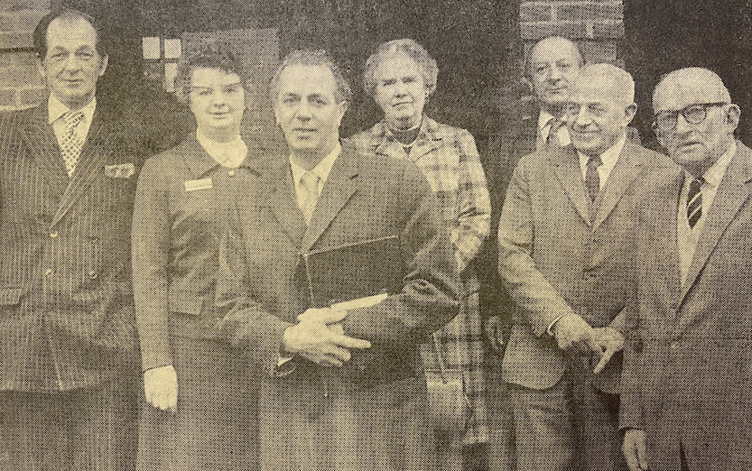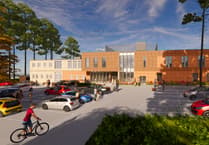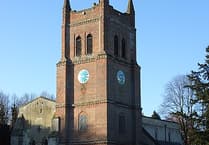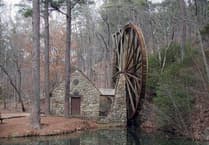Trimmer's Cottage Hospital in Farnham was front page news in the Farnham Herald on January 11, 1974.
Frimley Park Hospital had just opened as a large general hospital serving west Surrey and north-east Hampshire, putting the future of small local hospitals such as Trimmer’s in doubt.
Trimmer’s was named after its benefactor George Trimmer, a Farnham brewer. It had opened in East Street in 1894 and took the name to a new larger site in Menin Way in 1930.
But by the 1970s the NHS was moving towards providing complex equipment and specialist doctors in even bigger buildings catering for a wider area.
Sir Keith Joseph, the secretary of state for social services, visited Trimmer’s, which was one of the hospitals in the Farnham and Brookwood Hospital Management Committee area that had been recommended for closure.
He was pictured outside the hospital, holding a file, accompanied by paymaster general and Farnham MP Maurice Macmillan, senior nursing officer B V Ashton, League of Friends of Farnham Hospitals chairman Beth Ealand, hospital group secretary W I Davies, Farnham Urban Council chairman Cllr A G Hurdle, and Colonel Darnley Anderson, chairman of the Save Trimmer’s committee. He also met Dr I Wallace, chairman of the Trimmer’s Hospital medical staff committee.
Sir Keith insisted “no decision” had yet been made about whether to shut Trimmer’s, saying it was up to him and Michael Allison, the parliamentary under secretary of state for health. Also accompanying them were South West Metropolitan Board chairman Sir Desmond Bonham-Carter, acting board secretary C H Langley, hospital management committee chairman Dr N Whitehurst, and its vice-chairman E A Hills.
Sir Keith added: “Before acting on the recommendation, we want to look and listen. It is now for us to consider what we have seen and heard.
“We like the atmosphere of Trimmer’s and we know the people there don’t want to move - even as far as Farnham Hospital, let alone Frimley Green.”
Sir Keith acknowledged that staff shortages were a major reason for concentrating work at Frimley Park, along with the “impossibility” of providing sophisticated modern medical equipment at all the existing small hospitals. He said: “You can’t expect this sort of equipment at the end of your garden.”
However he did accept that, seeing as the big new hospital had to be built somewhere, people in Frimley - 11 miles from Farnham - were getting just that.
Trimmer’s had belonged to the taxpayer since becoming part of the NHS on its creation in 1948, so if the building was no longer required as a hospital it had to be sold. The local council had first refusal, but if it declined then the property would be auctioned.
Cllr Hurdle told the Herald he had emphasised the needs of Farnham, pointing out that it had a large elderly population which was being increased by people moving there after retirement.
With Frimley Park designed as a short-stay hospital, Cllr Hurdle envisaged a future for Trimmer’s as a “convalescent home” for older patients after they had been discharged, saying it was not easy for them to be looked after at home, especially if they lived alone.
He added: “I thought Sir Keith was very sympathetic to the hospital. He toured the wards and spoke to a number of the patients; he was very friendly indeed.”
Colonel Anderson said of his conversations with Sir Keith: “It was a very good meeting. I told him Farnham people would be bitterly hurt if the hospital was not saved for the town. I heard him afterwards tell Mr Macmillan and Mr Allison that he was faced with a very difficult problem.”
Despite the ideas and optimism, Trimmer’s Cottage Hospital did eventually close. But at the same time, the charity aiming to create the Phyllis Tuckwell Hospice was looking for suitable premises. After lengthy negotiations the building was purchased on December 10, 1976, and the hospice opened in February 1979.





Comments
This article has no comments yet. Be the first to leave a comment.